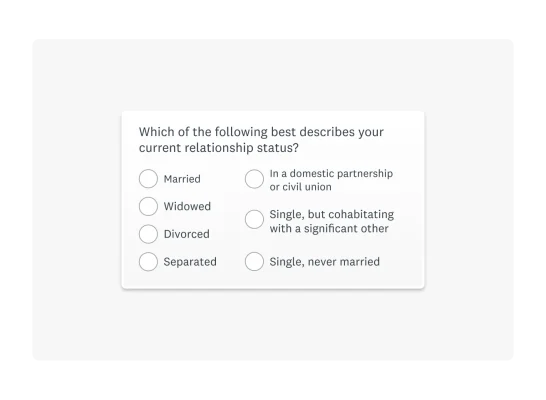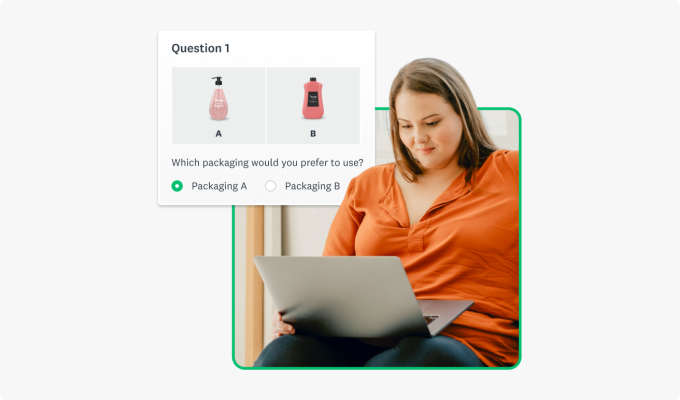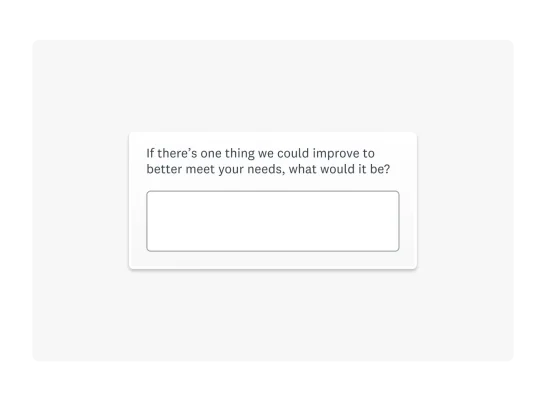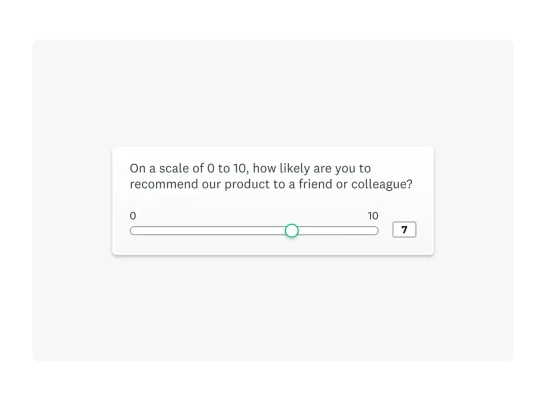The complete guide to customer behavior analysis
Get to know your customers and perform an actionable analysis in 5 easy steps.

How well do you know your customers or target market? Understanding their basic characteristics, attributes, and habits can help you refine your marketing and personalize the customer experience (CX) to a point. But data alone can’t give you the whole picture.
Many CX professionals and marketers use customer behavior analysis to boost customer satisfaction and refine the customer journey. For example, Starbucks uses app data to provide personalized recommendations, boosting sales and loyalty.
In this guide, you’ll learn why a holistic approach to data analysis is the best way to get to know your customers. We’ll explain how customer behavior analysis works, provide examples, and share tips for taking action on your results.
What is customer behavior analysis?
Customer behavior analysis is a method for understanding how and why buyers interact with your business. You can use it to understand how customers perceive your brand, purchase frequency, preferences, and more. These customer insights can help you optimize your marketing and customer journey.
A good customer behavior analysis example involves:
- Collecting qualitative and quantitative data across multiple customer touchpoints
- Assessing and analyzing customer behavior and decisions
- Accounting for cultural, social, and economic context
- Segmenting customers into key demographics or characteristics
- Building buyer or customer personas to inform your business strategy
Types of customer behavior
Businesses study consumer shopping habits and patterns to learn how to market to their audience effectively. Here are the four main types of buying behavior you should consider in your analysis:
- Complex buying behavior: This behavior involves making costly or rare purchases, like cars or high-end electronics, when customers are deeply engaged in the buying process and see significant differences between options.
- Dissonance-reducing buying behavior: This customer behavior occurs when a buyer is highly engaged in the purchasing process but finds it difficult to distinguish between brands. This confusion can result in post-purchase dissonance, leading to regrets about their decision.
- Habitual buying behavior: Habitual buying behavior is when customers are not invested in their purchase and perceive little brand differences. Purchasing things like eggs, milk, and gasoline are examples of habitual buying behavior.
- Variety-seeking buying behavior: The last type of customer behavior is when a person intentionally switches between different brands for variety, even if they’re satisfied with a particular product. These purchases tend to be lower-cost items like snack food or makeup products.
Factors that affect customer behavior
When conducting your analysis, consider these consumer behaviors in context. External factors will help you interpret your results and refine your action items.
- Personality traits: Some people are naturally impulsive, while others are more analytical and slow to make decisions. Additionally, a customer’s personality, upbringing, and background play into how they interact with brands.
- Social media trends: Social media is highly influential, particularly with the rise of TikTok and short-form content. Influencer sway, social proof, and FOMO can significantly impact buyers.
- Economic conditions: Market conditions greatly influence consumer behavior, affecting spending and saving habits. People tend to be more cautious with their money during recessions or financial uncertainty.
- Cultural influences: Values and beliefs also impact customer behavior across the board. A person’s values drive purchase decisions, shape their preferences, and affect their response to marketing campaigns.
- Psychological responses: Consumer attitude and mood significantly impact buying behavior. Happy customers will likely make big purchases, while those in a bad mood may become frustrated with support.
- Technological advancements: We must recognize the impact of technological advancements on customer behavior. Customers quickly move on to the next big thing when new technologies launch. Conversely, other customers are more likely to buy the outdated model once new tech is released and prices drop.

Why is customer behavior analysis important?
Companies can gain a competitive advantage by digging into customer motivations, thought processes, preferences, and more. This consumer research paves the way for informed decision-making in all aspects of a business, such as product development, marketing, and sales.
Also, customer behavior analysis promotes personalization, which is extremely important to today’s consumers and CX professionals. Our 2023 research revealed that 72% of consumers think personalization of products and services is important when considering brands they like.
Want to see what else we learned from CX professionals and consumers? Read our in-depth State of CX Report.
There are lots of other benefits to customer behavior analysis marketing, including:
- Improved marketing strategies: One primary benefit is using insights from customer behavior analysis to optimize marketing strategies. Understanding what drives purchases and effective emotional tactics can help you better appeal to your audience.
- Better customer experience: Analyzing customer behavior helps companies improve the customer experience by tailoring offerings, creating personalized marketing campaigns, and optimizing touchpoints in the buying journey. Understanding customer pain points and preferences enhances the overall experience.
- More sales and customer retention: With the insights you gain from customer behavior analysis, you can drive increased sales and focus on customer retention. Businesses should understand consumer buying habits, preferences, and motivations, businesses for better-targeted promotions, predictive analysis, customer feedback, and customer satisfaction.
- Increase customer lifetime value: Customer lifetime value measures a customer’s total worth over their entire relationship with your business. You can upsell more effectively, build loyalty, and optimize engagement with an improved understanding of your customers.
How to conduct a customer behavior analysis in 5 steps
Now that you understand why customer behavior analysis is critical to your business, you’re probably curious about how to do it. We’ll explain the steps to customer behavior analysis below so you can reap the benefits.
1. Segment your audience
Step one of customer behavior analysis is to segment your audience into smaller groups to analyze patterns and trends.
You can segment your audience based on:
- Demographic (age, gender, income)
- Psychographic (lifestyle, values)
- Geographic location
- Behavioral data (brand loyalty, purchase history)
Use these segments to hone in on more targeted insights that make a stronger impact than general trends.

2. Build customer personas and determine their selling points
Next, take the time to build customer personas, which are semi-fictional representations of ideal customers. These should be fairly detailed, including information about:
- Age
- Gender
- Occupation
- Income level
- Motivations
- Goals
- Pain points
- Buying behavior
Here’s an example of a buyer persona for a beauty brand that sells affordable makeup with a focus on cruelty-free products:
Name: Jessica
Age: 34
Gender: Female
Occupation: HR professional
Income level: $60,000-$90,000 annually
Motivations: Loves quality packaging that feels luxe without the price tag.
Goals: To find affordable, cruelty-free makeup products to look professional and put together at work.
Pain points: Doesn’t have too much time to shop around. Looking for products that fit her budget but aren’t low-quality. Hates that there are still products tested on animals.
Buying behavior: Makes semi-frequent purchases of her staple daily products.
Once you’ve finished your customer profiling, identify your unique selling points that align with their needs and preferences. What aspects of your product best align with their pain points? Use this to refine your messaging strategy and focus on what is most appealing to each customer segment.

3. Collect customer data and feedback
After segmenting your audience and building customer personas, it’s time to gather qualitative and quantitative data.
Gather qualitative data by:
Social listening: Monitor social media content that mentions your brand or its products to get discreet feedback.
- Interviewing customers: Conduct one-on-one interviews with select customers to gather candid feedback on your brand’s products or services.
- Running surveys: Consumer behavior surveys are a great way to collect data for business decisions.
- Establishing focus groups: Setting up focus groups lets you hear directly from your customer base.
- Gathering customer reviews: Be sure you constantly gather customer reviews to gauge customer satisfaction and respond to feedback.
- Browsing forums: Online forums like Reddit are popular places for customers to discuss products with others.

Gather quantitative data by:
- Running A/B tests: A/B tests are ideal for testing brand messaging, product packing, ad designs, and more. Running this type of test gathers consumer feedback on which version they liked better.
- Sending feedback forms: Feedback forms are a powerful method of gathering quantitative data from customers. Send Net Promoter Score® (NPS) surveys, the industry-standard method for measuring customer loyalty and satisfaction.
- Using web analytics: Use tools like Google Analytics to collect a wide variety of customer data, such as what content users view, what actions they take on your website, the type of browser they’re using, geographic data, and more.
- Using heatmap tools: Heatmap tools collect data on what parts of a web page customers spend the most time looking at or engaging with. This data is extremely beneficial for conversion rate optimization.
- Using CRM software: Customer relationship management software helps businesses improve customer data organization for better customer service and increased productivity.
- Collecting customer ratings: Customer ratings on your products can inform product development teams for future releases. These ratings indicate customer perceptions of your product quality and value.

4. Gain insights with customer data analysis tools
After the data collection stage, compare your qualitative and quantitative data. This stage involves reviewing and synthesizing your data to reveal powerful insights about customer preferences, behavior, and pain points.
Identify key trends and patterns
Identify key trends and patterns among your data to draw valuable insights about your customers. Note recurring themes in the data.
For example, customers may mention a particular product feature they like in interviews, focus groups, and surveys. Your analytics dashboard may also show high engagement on a page about the product feature, further confirming this interest area.
Correlate customer behavior with actions
Analyze customer feedback alongside actual behaviors. For example, if many customers want a faster checkout, check heatmaps to see if they’re dropping off during that process.
Determine common pain points
Watch out for shared frustrations from customers in their feedback. Customer pain points that arise from the data could be things like user experience (UX) issues on your website or poor customer service experiences. These will help you optimize your campaign strategies in the next stage.

5. Optimize your customer journey and campaigns
Using the insights from your data analysis, you can make targeted improvements to the customer journey, improving satisfaction and conversions. You can also refine marketing campaigns to better align with customer preferences.
For example, if your data showed that customers were dropping off during checkout, update your website to streamline this process. Improve the user experience and reduce friction in the buying process to increase conversions.
Use customer segmentation to create more targeted marketing campaigns that drive increased sales. Tailor your brand messaging in ad copy and emails to resonate better with specific groups within your target audience.
By improving your customer journey and campaigns using evidence-backed data, you can scale your business over time.
After making changes to your customer journey and campaigns based on your insights and data, review the results to see what’s working well (and what’s not). Follow up with customers by collecting their feedback on your changes.
Repeat the customer behavior analysis process as often as needed to improve your business continuously.
Discover your ideal customers and why they buy
SurveyMonkey empowers businesses around the world to gain key customer insights. Simply choose from hundreds of customizable survey templates written by experts. Then, launch a survey in minutes at any touchpoint. Or, learn more about how SurveyMonkey can help you streamline and act on your purchase experience feedback.
Net Promoter, Net Promoter Score, and NPS are trademarks of Satmetrix Systems, Inc., Bain & Company, Inc., and Fred Reichheld.
Discover more resources

Customer satisfaction survey templates
Explore our customer satisfaction survey templates to rapidly collect data, identify pain points, and improve your customer experience.

See how Ryanair collects customer insights at scale
Discover how Ryanair uses SurveyMonkey and its Microsoft Power BI integration to track 50K monthly CSAT surveys and improve customer experiences.

CSAT calculator: Measure and interpret customer satisfaction
Is your company meeting customer expectations? Use our free CSAT calculator to assess your Customer Satisfaction score and drive profits.

Empowering CX professionals: Using insights to overcome frontline challenges
Empower your CX team with actionable insights! Watch our webinar for expert strategies on boosting performance and morale.